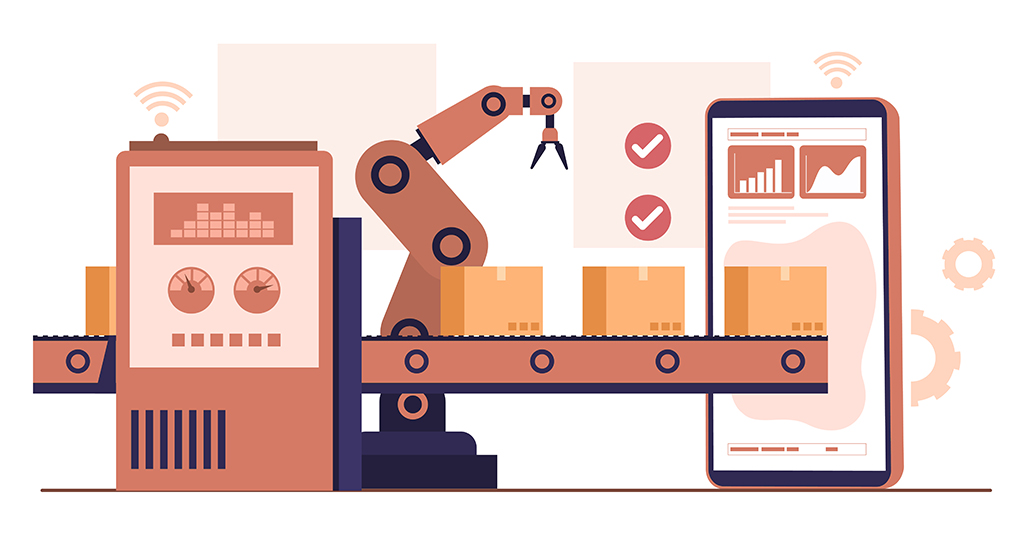The future has arrived, and with it, automation has become a staple for many manufacturers. It’s impossible to deny that we’ve entered Industry 4.0, and the once theoretical Industrial Internet of Things (IIoT) is real and vital to efficient day-to-day operations.
Author Nick Saraev

Photo: Freepik
The competitive advantages of having systems that work smarter and faster are clear. 83% of companies that have introduced IIoT into their processes have reported improved efficiency.
With waves of innovation coming faster and faster, it can be helpful to take a step back and look at what exactly it is and how you can leverage it to stay ahead of the curve.
What is IIoT?
IIoT is the process of connecting machines and sensors to the internet, allowing them to communicate data in real-time. This kind of connectivity allows for a much higher level of automation, allowing factories to become more efficient and productive.
The connectivity between systems has been the core concept behind IIoT since its inception. Connectivity can take many forms, such as wired or wireless networks, Bluetooth connections, or simply being connected online through cloud services. With these different options available, it’s easier than ever before to incorporate IIoT into your manufacturing processes.
The Benefits of IIoT for Manufacturing
Using connected devices in industrial settings allows manufacturers to increase efficiency through improved communication between machines, people, and systems. This connectivity eliminates manual processes that used to be necessary for monitoring production and allows businesses to collect more accurate data on their operations.
By leveraging this data, companies can make better decisions about how they produce and manage their products – leading to increased productivity and cost savings.
IIoT technology is also helping manufacturers reduce downtime by providing early warnings when something goes wrong with a machine or system. This allows companies to take preventative measures before a major issue arises, saving money and resources in the long run.
The Challenges of IIoT
Given the advantages of IIoT, it’s no surprise that companies are eager to implement it. However, there are still some challenges in terms of cost and implementation.
The first challenge is that most companies do not understand how to incorporate technology into their existing processes. They may invest in solutions that don’t work as intended or integrate with the rest of the system properly.
Another challenge is security. As more devices become connected, so does the potential for malicious actors to access sensitive data and disrupt operations. Companies must ensure they have proper security protocols in place before connecting any device to the internet.
Managing patches can also cause problems for a company starting with IIoT. A patch is a piece of software that fixes an issue with a program or device. As more devices become connected, it becomes increasingly difficult to keep track of what needs to be updated and when.
Having a team of experts that can keep everything running smoothly is essential.
IIoT Trends for 2023
As manufacturers continue to explore how IIoT can benefit their operations, several upcoming trends could shape the future of this technology:
1. Edge Computing
Edge computing is becoming increasingly important for industrial applications as it allows data processing closer to where it’s being collected rather than sending it over networks or cloud-based services. By doing this, companies can reduce latency and see results faster than ever before. Edge computing also helps improve security since sensitive data can remain localized.
2. Automated Machine Learning
Machine learning is a powerful tool for gathering insights and optimizing processes, but it can be difficult to implement due to the complex algorithms involved.
Fortunately, automated machine learning (AutoML) is emerging as a way to streamline this process by automating the development of models and simplifying their deployment in production environments. This means that companies large and small can take advantage of AutoML with minimal effort on their part.
3. Predictive Maintenance
Predictive maintenance allows manufacturers to predict when certain assets may need repair or replacement before they fail, reducing downtime and expenses. This is enabled by IIoT technology which can collect data from machinery and make predictions based on patterns that have been established over time.
4. Autonomous Robotics
Robotics has become an important asset for many manufacturers. The use of autonomous robots powered by AI and IIoT will be more prevalent in the future as they can take on more complex tasks with faster processing speeds than ever before.
Autonomous robotics also provide improved safety measures since they don’t need human interaction to operate, reducing the risk of injury or accidents in hazardous environments.
5. Cybersecurity
As mentioned before, cybersecurity can be a major concern when implementing IIoT. As our technology continues to evolve, so does the need for proper security measures. Companies will need to invest in robust cybersecurity solutions to protect against threats and data breaches.
6. Data Analytics and Prognostics
Data analytics and prognostics are now crucial for manufacturers as they leverage IIoT to monitor their machines and processes. With the help of predictive analytics, companies can anticipate potential issues through pattern recognition, allowing them to take preventive action before a problem occurs.
Additionally, data analysis can also provide insights into process optimization that could save time and money in the long run.
7. Wireless Accessibility
The use of wireless communication has been increasing in the industrial space, and it’s predicted that there will be 75 billion IIoT devices in operation by 2025. This will require more and more wireless connections.
Wireless networks provide improved flexibility, reliability, and scalability over their wired counterparts, allowing for faster response times and data transfer.
8. Smart Gadgets
Smart gadgets are becoming extremely popular in factories, providing enhanced data collection and analysis capabilities that can be used to improve efficiency. This includes everything from smart sensors to wearables, which allow manufacturers to monitor their workers’ performance and health in real-time.
Additionally, these devices provide a way for companies to track important metrics such as machine usage and energy consumption.
Conclusion
The future of IIoT in manufacturing is bright. Companies quickly realize the potential that this technology has to increase efficiency, reduce costs, and improve customer service.
As companies become more aware of the challenges associated with implementing IIoT, they will be better prepared to take advantage of its benefits. The key for companies is to ensure they understand the different types of connectivity available and how best to implement them into their processes.
The more you know about IIoT, the better you’ll be at implementing it in the best way for your company. If you want to learn more about the ever-shifting landscape of automation and connection, Copperberg is the place to go.
With connections to countless industry experts and reports on everything from AI to Overall Equipment Effectiveness and beyond, you’ll find everything you need to bring your company into the future.






























